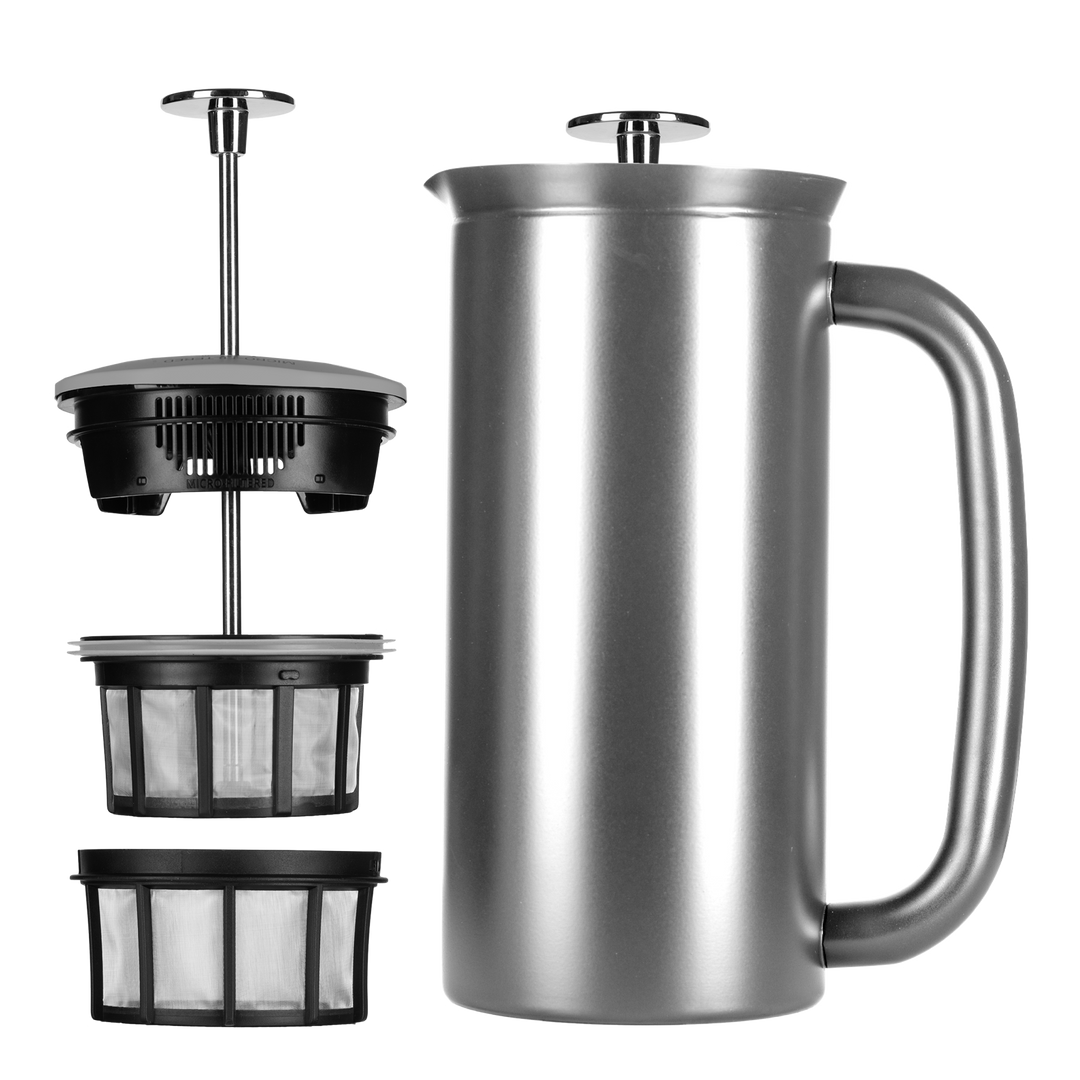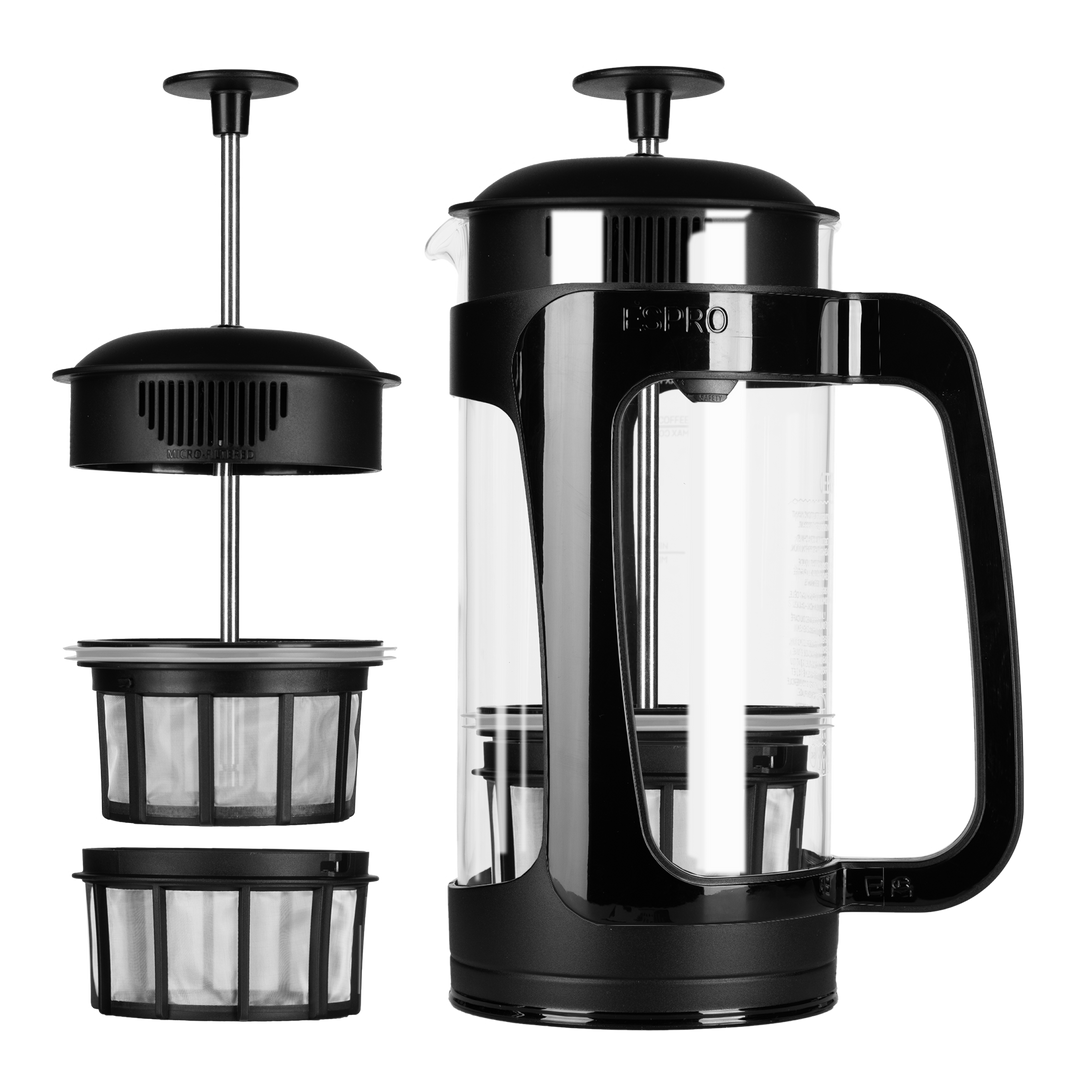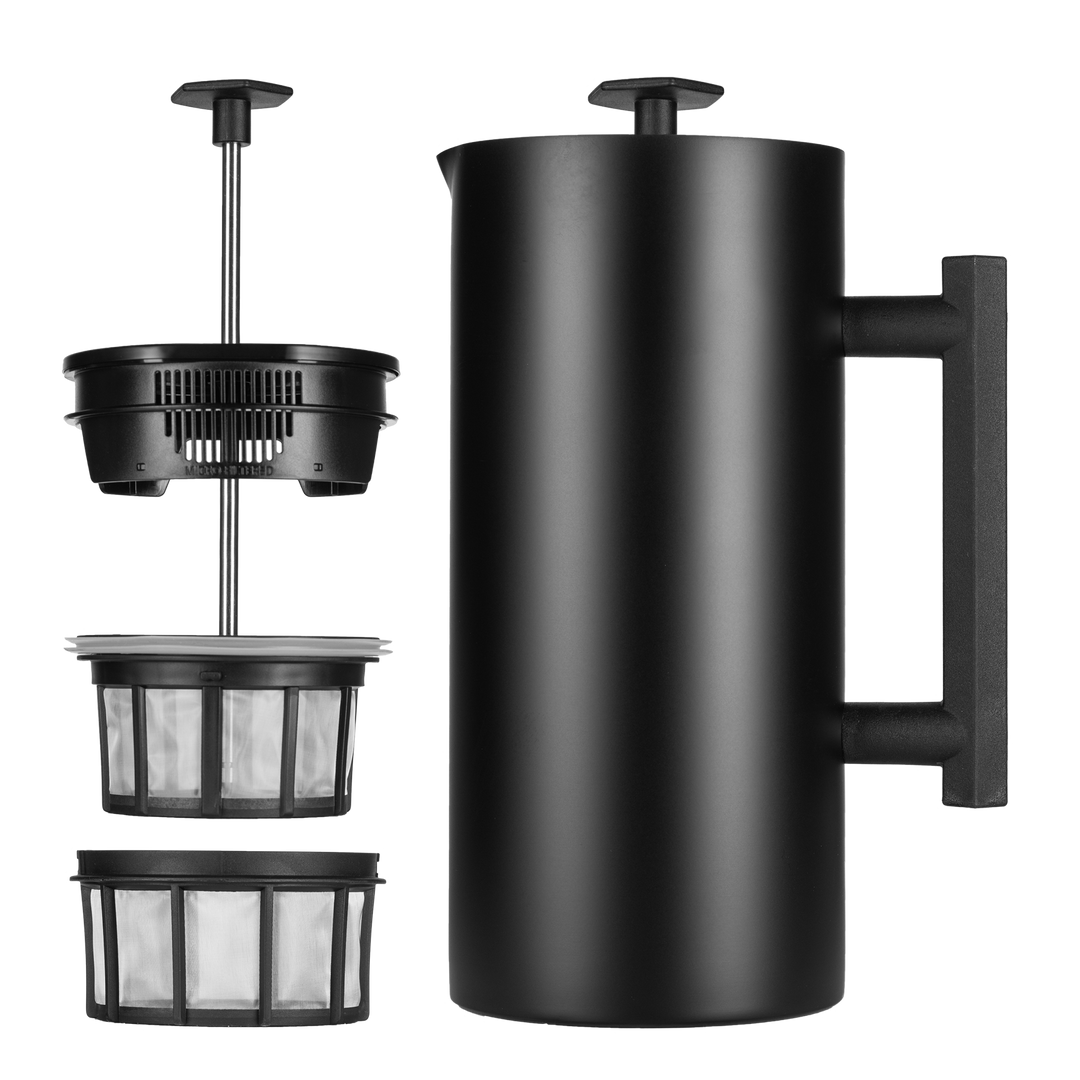We bet you can remember the last time you looked at the flavor notes on a bag of coffee beans and thought to yourself: “Wait… what? It’s just coffee!”
Tastes like apple butter, ganache, and freshly-picked dandelions.
Coffee tasting notes can seem so pretentious, so absurd—but they’re not always a marketing gimmick for hyper-hipsters.
Coffee has a wildly diverse range of possible flavors, but most people don’t know how to identify them, or what to even look for.
For example, brewed coffee has over 1,000 aromatic compounds that contribute to flavor. Wine generally has less than 300. Those obscure, complex flavor notes your local baristas talk about? They’re not made up. Coffee flavor is crazy.
And when you learn to taste these complex coffee flavors, your daily brew becomes even more delicious, because you can experience—in a very real way—a deeper layer of appreciation for coffee.
We’d love to show you how, including…
-
Why coffee has historically tasted flat and bitter (and why it’s no longer the case)
-
The #1 simplest way to improve your tasting skills
- How bitterness is a good thing
This article could change how you enjoy coffee forever.
Tasting Is A Learned Skill (That Most Haven’t Worked On)
We grow up thinking that tasting, as one of our five primary senses, is a linear process. Food hits your tongue, your taste buds measure the chemical compounds, and your brain gets a message saying “this tastes like cheddar” or “that’s a sweet cake”.
But tasting is as much a mental game as it is a physiological one. It’s like when you get a mosquito bite. If you’re distracted, the itch becomes faint or even goes away entirely. If you’re thinking about it—good luck not scratching.
Tasting works the same way. When you give your mind the space to really think about your coffee, you become hyper-aware of it and can perceive the more nuanced, complex flavors.
Here’s our #1 trick for getting in the right mindset: when you take a sip of coffee, swish it around your mouth for a second or two, then ask yourself the magic question.
What does this remind me of?
This forces your mind to think creatively about the nuanced flavors of your coffee. Does it remind you of a dark chocolate bar? Perhaps there’s a caramel sweetness in there? It’s a simple exercise that trains your palate to offer your brain more precise, interesting flavors.
There are six types of tastes you should be mindful of while enjoying your coffee. When you know how to identify each layer, you can put them all together to create your own tasting notes.
We suggest referring to the Specialty Coffee Association’s Coffee Taster’s Flavor Wheel as a guide to help you in this next part.
Acidity
Acids play a huge role in your coffee’s overall flavor, often enhancing the more subtle flavors of your coffee so that they’re easier to taste.
Sometimes acids are straightforward, simply tasting bright, gentle, or sour. Other times, acids taste linked to one of the coffee’s flavors or aromas, as if they couldn’t exist without each other. For example, you might say a brighter coffee has an “orange-like acidity”, or that a smoother coffee has “a gentle acidity like a melon”.
When you ask the magic question (what does this remind me of?), you may use phrases like…
-
A gentle acidity
-
Tangy tropical fruit brightness
-
Lemon sourness (if the coffee is old and stale)
-
A grape-y tang
-
Wine-y acidity (common in natural process beans from Africa)
Sweetness
The natural sugars in coffee are delicate and fleeting, but if you hit the targets for a well-brewed cup of coffee (freshly roasted, freshly ground, even extraction), they can taste exceptional.
In a lighter roast, where the acids are more pronounced, the sugars may taste light, fruity, or floral. In a darker roast, where the sugars reach a deeper caramelization, you’ll probably find darker sweetness notes.
You may use phrases like…
-
A light floral sweetness
-
Juicy berry sweetness
-
A hint of honey
-
A deep, rich molasses sweetness
Aroma
Most of the flavors you taste are actually aromas—and not just in coffee… in everything.
The complex aromatic compounds of food and drinks rise through your nose and retro-nasal passages in your throat, hitting those aroma sensors at the same time your coffee hits your taste buds, forming a cohesive, incredible flavor.
This is where some of coffee’s most rich, nuanced, and exotic flavors come from (there are over 1,000 aromatic compounds in coffee, after all). Be open to sensing fruity aromas, floral aromas, spice-y or woody aromas, and even sugary aromas.
You may realize that you sense…
-
A rich floral aroma
-
Deep pine-like aromas (common in coffees from Sumatra and surrounding islands)
-
A cane sugar-like sweet smell
-
Rich blueberry aroma (a beloved smell from natural process Ethiopian coffees)
Bitterness
To the surprise of many, bitterness is a good thing in your coffee—but it hasn’t always been. For most of coffee’s history, beans have been roasted so dark that they tasted bitter and ashy. Thankfully, the world is discovering how to roast coffee without turning it pitch-black, preserving the better, more complex flavors.
It’s here that bitterness creates a well-roundedness. The tangy acids are rounded out with smooth lower notes to form a balanced brew.
When you taste high-quality bitterness, you might describe it as…
-
A dark chocolate bitterness
-
A complex orange-like bitterness
-
Earthy low-notes
-
Pleasant spice-y bitterness
Mouthfeel
The coffee experience isn’t just about taste, but feel too. Every coffee has a unique set of chemical compounds that can change the way it feels in your mouth. Sometimes we also call this element the coffee’s “body”.
A coffee with lots of natural oils may feel silky. A coffee with more natural sugars may take on a juicy mouthfeel. And beans with higher bitter tannins or out of control acids may be astringent (make your mouth feel dry and rough).
Your brewing method has a big impact here. French press coffee, since the coffee is filtered by metal, has more micro-grounds in the final cup that lead to a heavy body. Paper-filtered coffee will likely have a cleaner mouthfeel, since those grounds and oils get trapped by the filter.
You may describe mouthfeel as…
-
A sweet, juicy mouthfeel
-
A heavy, full body (like from a french press)
-
Clean
Aftertaste
As you begin to swallow your coffee, those final aromas rise to your smell sensors and the liquid coffee hits the back-most taste buds near your throat. This is the final flavor experience of each sip, and it usually embodies the most powerful of the coffee’s flavors.
You may describe the aftertastes as having…
-
A lingering floral aroma
-
A harsh, burning sourness (like a bad shot of espresso)
-
A sweetness that just stays with you
-
A rich earthy flavor
Tasting Notes: Putting All The Elements Together
There’s no single ‘coffee flavor’. It’s a blend of acids, sugars, oils, bitter tannins, and other compounds that create a symphony of flavor, aroma, and mouthfeel experiences. Your coffee’s flavor is all of it at the same time!
Ultimately, tasting coffee is not an exact science. The way you interpret a coffee’s flavor is largely dependent on how you perceive other kinds of flavors.
(There is a scientific method for measuring and identifying coffee flavors, run by the World Coffee Organization, but it’s not frequently used. Most people use their intuition.)
|
We designed the ESPRO Coffee Tasting Cups using modern sensory science to help your brain perceive flavors more strongly. Pair a fruity Ethiopian coffee with the ‘Fruity’ tasting cup, or a chocolate-y Central American with the ‘Coca’ cup. See how it works. |
The world of coffee flavor is diverse and incredible—there’s a lot more to explore than most people ever realize.
But if you take the first few sips of your daily brew to really think about and enjoy your coffee on a deeper level, you’ll elevate your daily ritual to a whole new level in the long-run.
Happy tasting!
Your friends at ESPRO








